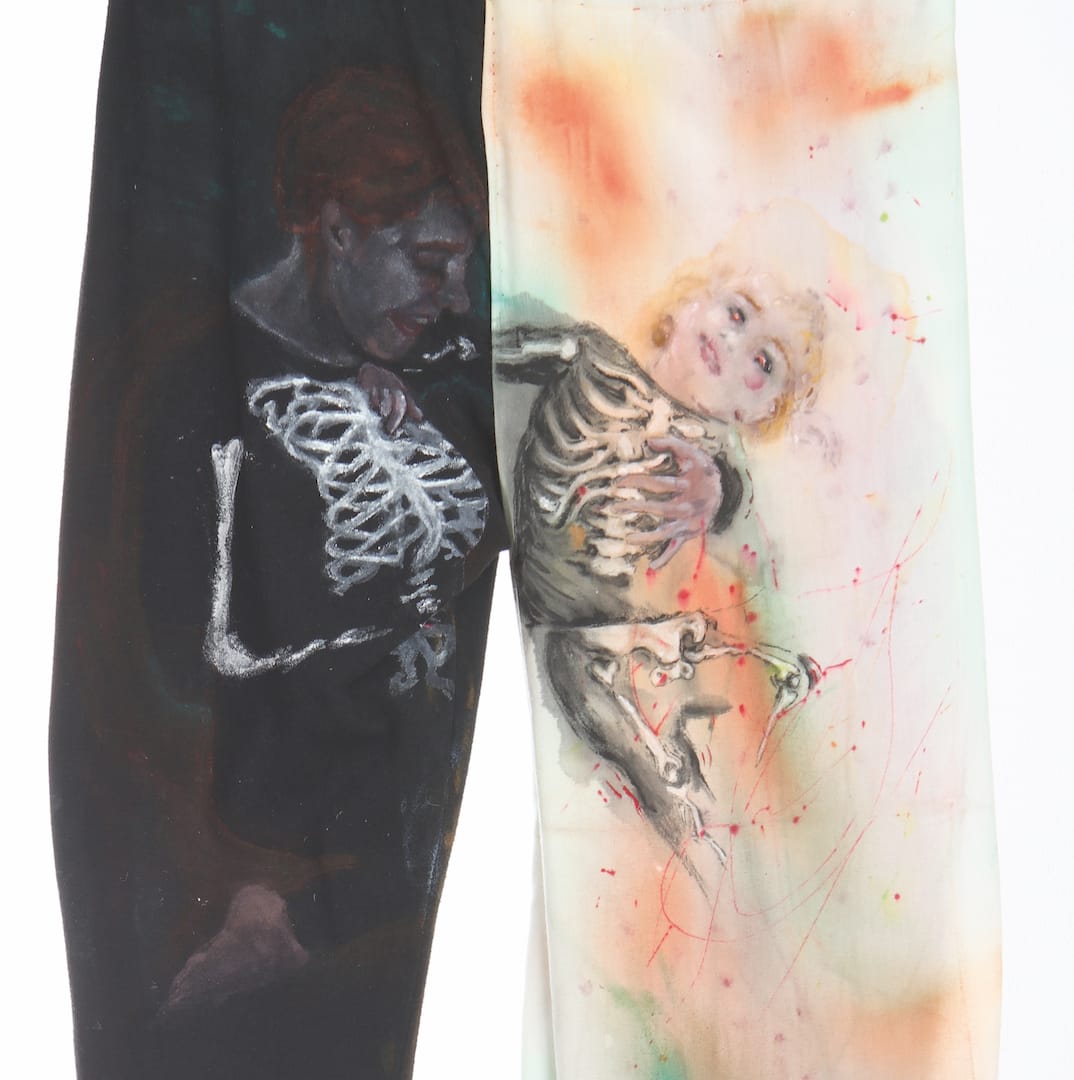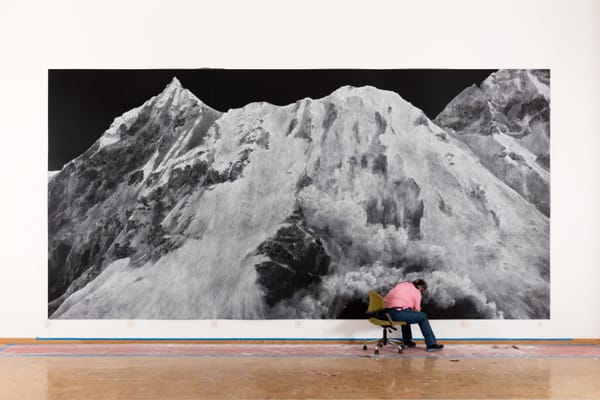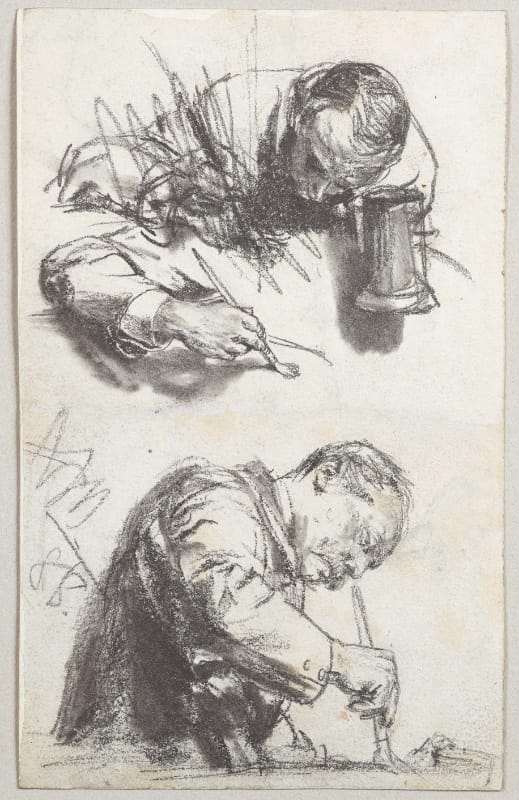Clash of Cultures – Mindy Lee

Mindy Lee is an artist and curator of the Blyth Gallery – the creative hub of Imperial, showcasing various works from Imperial students and professional artists throughout the year. In a continuation of the Clash of Culture series, Fred Fyles, Editor-in-Chief, talks to Mindy about her work at the gallery and the division between science and art.
When I listen back to the recording of my conversation with Mindy Lee, artist and curator of Imperial’s Blyth Gallery, there’s the faint sound of piano music tinkling along in the background. Mindy’s office is located in the Blyth Centre, surrounded by music practice rooms, from which the sound of students hammering at piano keys emanate; it has a beautiful view over the grass of Queen’s Lawn, where students have spilled out to enjoy the warm midday sunshine. The Blyth Centre, is, in a number of ways, the artistic hub of Imperial College London; it’s home not only to these practice rooms, but also to the Blyth Gallery, a long white-walled space, where Imperial students and staff regularly display their work. Mindy is its curator, dividing her time between organizing shows, putting on art workshops for staff and students, and making her own artistic work. We caught up with her to chat about the intersection between art and science, as well as the influence science has had on her own work.
Fred: Could you tell me a little bit about your background, and how you got involved with the Blyth Gallery?
Mindy: I’ve always wanted to be an artist, and I was born into a family of scientists, so I’ve been brought up with a scientific way of processing the world around me. I was at the Royal College of Art from 2002 to 2004, during which time there was a commission to celebrate women in science, which I won. So I worked with Imperial for a year to develop a painting, and from that I got to know Richard Dickins, Director of the Centre. We had a lot of conversations about how the Gallery could stay open, because it was under threat of closure. That led to me coming here as an independent advisor for a couple of years, before eventually getting a permanent position.
F: Could you tell us a bit about the Blyth Gallery itself?
M: The Blyth Gallery is on Level 5 of the Sherfield Building, and we have twelve shows a year. Three are professional shows by visiting and emerging artists, who could be London-based, or national, or international. There is one Royal College of Art show, and eight shows that are Imperial College student and staff: art societies, medical humanities students, PhD researchers, solo staff members, artist in residence – you’ve got a really nice mix of things to see in the space.
I also run a studio space, which is in 153 Roderic Hill, where students and staff can come to learn make art, and be taught for free by myself and other artists throughout the year.
F: What do you think about the societal division between art and science? Do you think such a division does really exist? How do the two interact?
M: I think the divide is imagined, or it’s to do with not being able to translate from one language to another. I think interaction and influence between the two happens in three ways: there’s a direct interaction, which could be a collaboration on projects. The second way they influence each other is an indirect way, which is a cross-pollination of ideas or conversations arising between subjects and disciplines; it’s not a direct interaction, but there’s something about talking around subjects or research through exhibitions and workshops which triggers a development. The third way, which is equally important, is a separated interaction, where the art and the science are apart – particularly at Imperial, the scientists are taking a break from thinking about their analytical research. They can concentrate on using a different part of the brain, and thinking with different logic systems and scenarios. Then when they come back from this altered, other way of spending time, they return refreshed, and might just have a breakthrough, because they’re coming at the research from a completely different angle. I try and provide opportunity for all three scenarios with the programme here, so there’s maximum opportunity for people to influence each other.
Talking to one of the PhD students, we came to the conclusion that working in the studio and working in the lab is exactly the same. It’s about looking at a set of information and rules, and how you explore those logic systems within your own practice, whether that’s an experiment or a painting. It’s like translating: the translation isn’t word for word, but it’s about the flow of the language and the nuances of the language you’re speaking – it’s the same with visual and scientific processes. If you’ve got a rigorous discipline in one but it’s light in the other, then it doesn’t translate as well as it should. Whereas if you’ve got a respect for each language and an understanding of each language, then you lose the barrier, you can flow between the two really easily.
“The division between science and art is imagined; it’s to do with not being able to translate from one language to another”
F: You also run painting and drawing classes within the studio. One thing I’ve found encouraging students to write is a sense that people don’t feel they’re ‘allowed’ to be creative because they’re a scientist. I was wondering whether that’s something you’ve found?
M: Yes, there’s a barrier there in terms of self-permission, absolutely. I’m mentoring with PhD students over the summer, and a lot of students have said ‘I needed an excuse to allow myself to make some art, and this project has given me that excuse.’ Not allowing ourselves time in our lives for other things is really sad. And needing that permission to do it is frustrating. It’s about giving people the confidence to do something creative. It benefits us just as much as sports, to keep our minds and bodies healthy, it’s the same with arts, with music, with writing, with theatre.
F: Do you think having something like the Blyth Centre as a whole that is semi-institutional makes it easier for students to get that permission?
M: Yes. It’s very immediate and very accessible. Especially in terms of seeing exhibitions in London. There are hundreds of exhibitions, and they’re all in quirky places, like ‘knock three times on this unmarked door.’ You think: ‘is it going to be good? Will it be bad? Can I go there on my own? Will I knock on the door?’ – you can come to the Centre and see a strong cross section of what’s going on in the art world.
It’s the same with making, that fear of the blank page – writer’s block, artist’s block. Being able to come on a Wednesday afternoon and say ‘I don’t know what to do’ with other people in a similar situation, and be able to make something for ten minutes, or an hour, or three hours – whatever you want to do – and not feel you can’t. You’re in a safe, creative space.
F: Within your own work, you incorporate a lot of elements relating to the body – prescription sheets, eyes, teeth. How do art and science come together in your practice?
M: When I was doing GCSE science, we had to take something in to look at under the microscope. My dad worked in the hospital, and he brought me cross-slices of tissues, saying ‘you can take those and they’ll be really interesting to see’. So there’s always been this medical understanding of the body, and this emotional side of the inside of the body have been mashed together for me. An analytical response to an internal body is very good counterpoint to an emotional response to an internal state, so they play together and bounce off each other really nicely. I enjoy having something that has to be true and something that’s very intuitively felt coming together.
“When things are coming together and being curated, what I imagine are the works are like characters in a story”
F: Recently you’ve also been making artwork in collaboration with your son – can you talk a little bit about how having a child, and involving him in your work, have influenced your practice?
M: Before I had him, I had two strategies to making: a loving rendering that’s very careful to get things in a certain way; and then a much more emotionally expressive way to work. I would let those two things smash together. Looking at my son’s gestures, he has a truly accidental gesture because he had no control over the marks he was making. My emulated free gestures can’t compete with his. So I thought if I split my practice, and give him more of that freedom, and take on more of the parental roles within the art practice then we can communicate visually across our different modes of making.
That explains a lot more about my reactive, adaptive, response to being a mum, being a person, and being an artist – my experience of life carries through into my work.
F: Do you think your time at Imperial, being at this intersection between art and science, has influenced your practice over the years?
M: Absolutely. Definitely subconsciously, but then there are certain shows that really excite me. Getting to see all this work come together, and then coordinate and curate it. It’s an art form in itself, bringing things together like a conductor so I can understand the story of how work comes together and let the viewer see that as well. It’s a very natural space for me to be in, this inbetween, so I’m very lucky.
F: You mentioned the curational side of it. Can you talk about how you curate a show and set up the work?
M: When things are coming together and being curated, what I imagine are the works are like characters in a story. My job is to introduce the story, and then let the characters interact in a way that makes for an exciting novel, so to speak. So that’s the first part of the job, understanding the work and how it relates to other work, which is relative and will change.
Then there’s how the works behave in the space. For me, it’s very anthropomorphic, they are very living things, so there are questions like: how much space do they need? How much space between work is needed, so they’ve got their own time to breathe and be processed? It sounds like I think about these things consciously, but over the years it’s become very instinctive – like learning to drive, it seems mad when you first hear it, but then it’s very instinctive.
F: I know you’ve been here for a lot of shows – were there any that particularly stood out for you?
M: One of my proudest shows was between Photography Society and Leonardo Fine Art Society. They’d been doing this hybrid show for a few years, but there was just one year where that really clicked. They stopped being Photography Society on one side and LeoSoc on the other; we did a show where we folded photographs into origami birds, and they flew like a flock through the space. It was beautiful and really ambitious. It took a week to install. You could not tell that wasn’t a professional show – and from that point they’ve interacted really well together.









